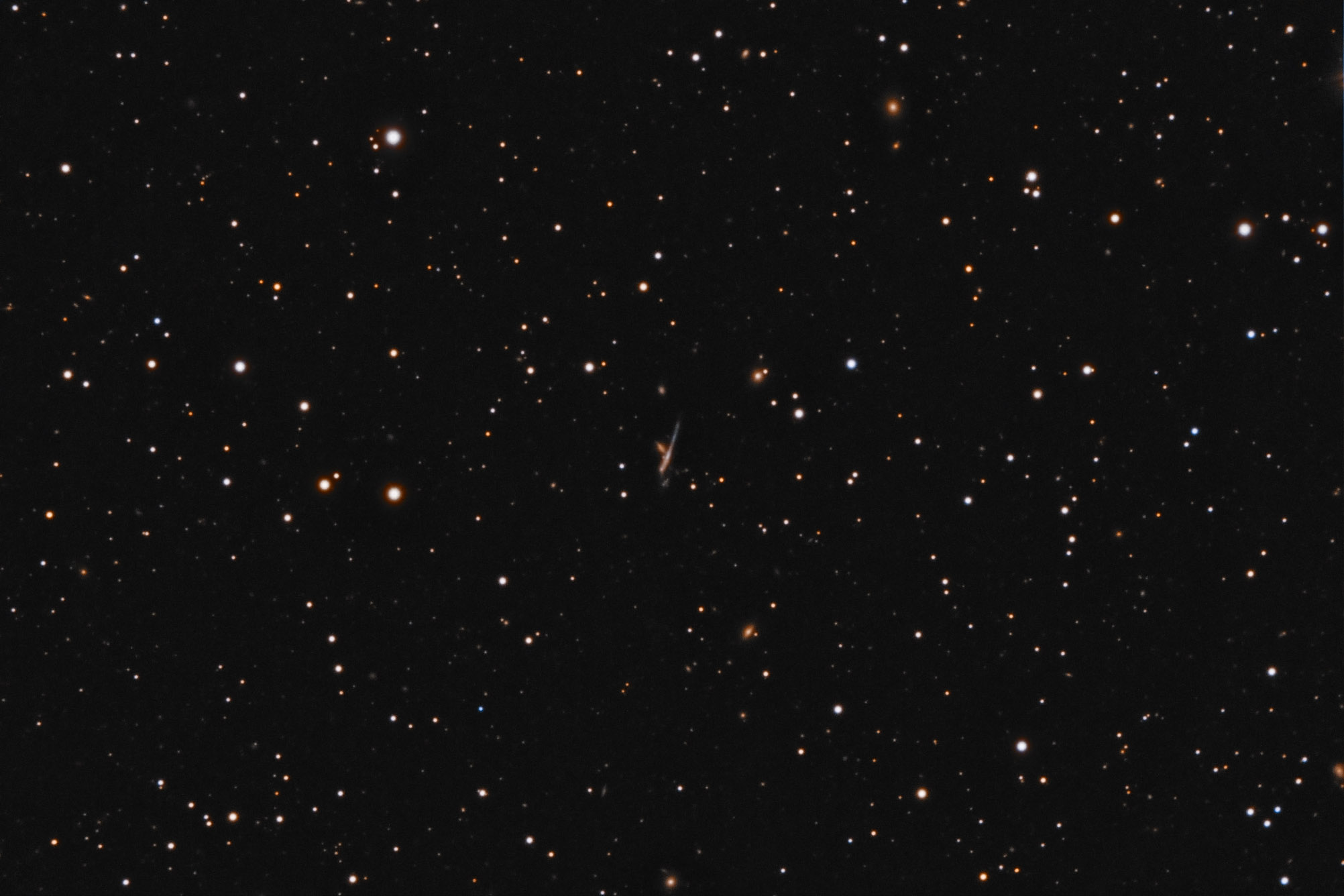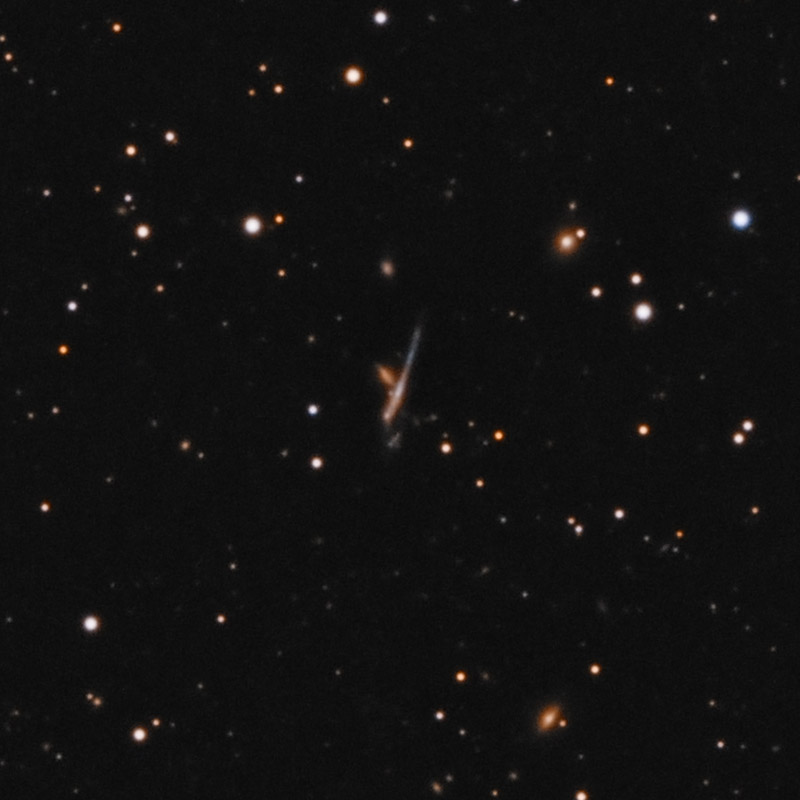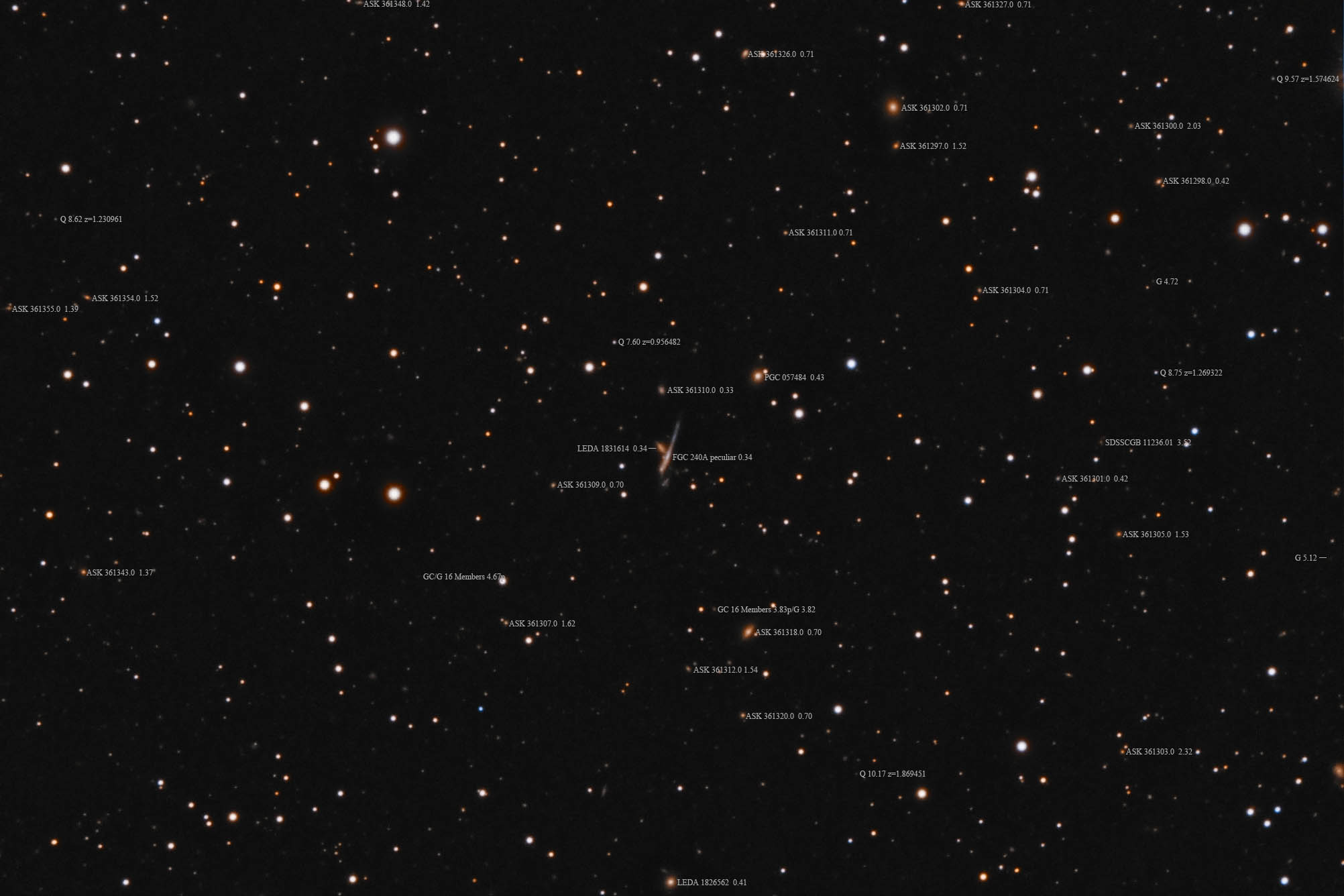| Description | Images |
Object name: FGC240ADesignation(s): FGC240A, UGC10273, FGC 240A is a very strange galaxy in southeastern Corona Borealis about some 340 million light-years distant. If you are wondering where FGC 240 is it is on the opposite side of the sky at 2 hours rather than 16 hours. How this numbering scheme works is beyond my brain. NED fails to classify though does label the trio of galaxies that is UGC 10273 and includes FGC 240A as a spiral? A paper I found on it says simply peculiar so that's what I put on the annotated image. It certainly is weird. The brightest spot a bit below center is actually a blue knot of stars. It appears the real core is further down where it is orange. At the very bottom is another blue knot and a faint plume pointing at a quartet of tiny galaxies, three are in a neat line. The long tail to the north is blue and has much fainter and smaller knots in it. How it got that way I don't know. We are apparently seeing it rather edge on. It is obviously severely "sloshed. I'd love to know what it looks like more face on. I measure its length at 175,000 light-years. While there are two galaxies known as "Taffy Galaxies" (UGC 813 and 12914/5) due to being stretched this one seems even more stretched than those. Related Designation(s):2MASS J16124470+2817093, 2MASX J16124472+2817095, AKARI J1612449+281707, CGCG 1610.7+2825, CGCG 1610.7+2825 NED01, CGCG 167-047, CGCG 167-047 NED01, FGC 240A, FGC240A, IRAS 16107+2824, IRAS F16107+2824, MCG +05-38-036, MCG +05-38-036 NED01, NSA 146812, NVSS J161244+281711, PGC 057494, SDSS J161244.67+281710.0, SDSSCGB 00350.01, SSTSL2 J161244.72+281710.2, UGC 10273, UGC 10273 NED01, UGC10273, UZC J161244.7+281709, VV 489, VV 489 NED01, [MO2001] J161244.9+281706.3, | Permanent link: https://images.mantrapskies.com/catalog/OTHER/FGC240A-UGC10273/UGC10273L4X10RGB2X10.JPG |


